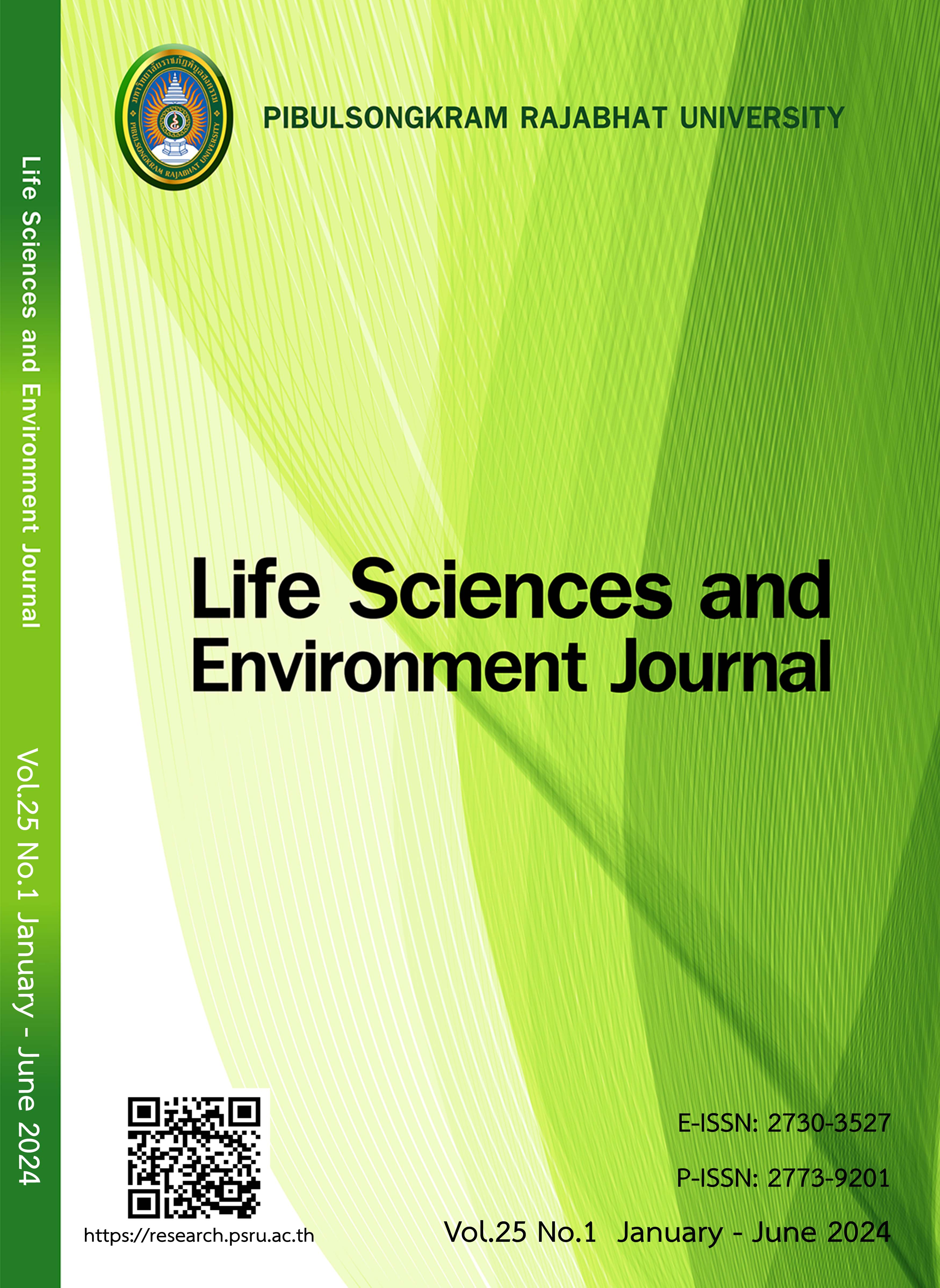CONSERVING AND UTILIZING NATURAL RESOURCES CREATIVITY BASED ON BIODIVERSITY AND COMMUNITY PARTICIPATION IN MAE RAM WATERSHED, CHIANG MAI
DOI:
https://doi.org/10.14456/lsej.2024.19Keywords:
natural resources, biodiversity, participation, local community, Mae ram watershedAbstract
This study explores water management in the Mae Ram Watershed, Chiang Mai, focusing on the interplay between local community practices and water resources, guided by the Sufficiency Economic Concept and indigenous knowledge. Extensive data collection, including participation in field surveys and sampling, was conducted, incorporating secondary data in the upstream, middle, and downstream areas of the watershed. The examination involved local community management and stakeholders, covering the diversity and distribution of various biological and land-use aspects, as well as the current environmental situation. The results showed that almost the entire area consisted of deciduous dipterocarp forest, with low plant abundance, except for an evergreen forest area upstream. Key findings revealed the influence of physical factors on vegetation's spatial distribution and seasonality. Higher terrains exhibited denser plant life, and steeper slopes had more vegetation. The study identified 88 plant species collaborating with fungi, lichens, algae, insects, and birds. The Natural resource utilization in the upstream and middle streams depended on local indigenous, traditional, and ethnic beliefs, whereas downstream areas were primarily used for agriculture and residence. Water quality in the Mae Ram upstream was clean, while it was moderate in the middle and downstream areas, based on physical-chemical parameters and biological indicators. The water balance of all villages was sufficient, while some villages were facing a shortage period in the dry season. The community involvement in water resource management varied from moderate to high; however, overall, local self-management needed to be more robust, necessitating external collaboration. The watershed needs a consistent annual plan and ongoing community participation in water resource protection and conservation.
References
Abel A, Gregory Mankiw N, G, Summers L, Zeckhauser R. Assessing dynamic efficiency: Theory and evidence. Review of Economic Studies 1989;56(1):1-19.
Carrillo-Hermosilla J. Pablo D. R. Totti K. Diversity of eco-innovations reflections from selected case studies. Journal of Cleaner Production 2010;18:1073-1083.
Damrongthai P. The community forest, development, and sustainable management. Community forest management office. Royal forest department; 2014.
Doungsanpud S. The community forest management with the community participation A Case Study of PhuPhuop Community Forest. Rajabhat Maha Sarakham University Journal 2021;15(1):93-107.
Environmental and Pollution Control Office 1 (Chiang Mai). Integrated Community-based forest and catchment management through an ecosystem service approach. CBFCM. Conclusion Report; 2017.
Hermhuk S, Sungpalee W, Atnaseo C, Pothawong N, Sri-Ngernyuang K. Plants utilization of Tai Lue at Bann Tapapao community forest Mae Tha district Lamphun province. Thai Journal of Forestry 2018;37(1):111-120.
Kasatsiri C. The mekong river from colonization to globalization, Sarakadee Magazine. Sarakadee Printing; Bangkok 2003;225:57-83.
Kunpradid T, Peerapornpisal Y. Using of macroalgae distribution as biomonitoring in Ping River. Journal of Science Chulalongkorn University 2004;3:205-214.
Loppawong N, Panyanuwat A. Management process for retaining cultural identity of the Pga K’nyau ethnic group in Ban Nong Monta Mae Wang District Chiang Mai Province. Graduated Research Conference Khon Kaen University 2014:2211-2218.
Oldfield ML, Alcorn J, Biodiversity, Culture, conservation and Ecodevelopment. Boulder. Cololado: Westview Press; 1991.
Piromchai S. The handbook of natural researches management in subdistrict level. Dumrongdhram Institution Printing; 2000.
Simachaya, W. Water Quality Management in Thailand. Workshop on environmentally sound technology on water quality management UNEP, Mekong River Commission; 2000.
Simon G, Pinda S, Wilawan A. A filed guide of northern tree of Thailand. Kobfire Printing Project; 2000.
Westman M. The relationship between stress and performance: The moderating effect of hardiness. Humen Performance 1990;3(3):141-155.
Downloads
Published
How to Cite
Issue
Section
License
Copyright (c) 2024 Life Sciences and Environment Journal

This work is licensed under a Creative Commons Attribution-NonCommercial-NoDerivatives 4.0 International License.
Each article is copyrighted © by its author(s) and is published under license from the author(s).










